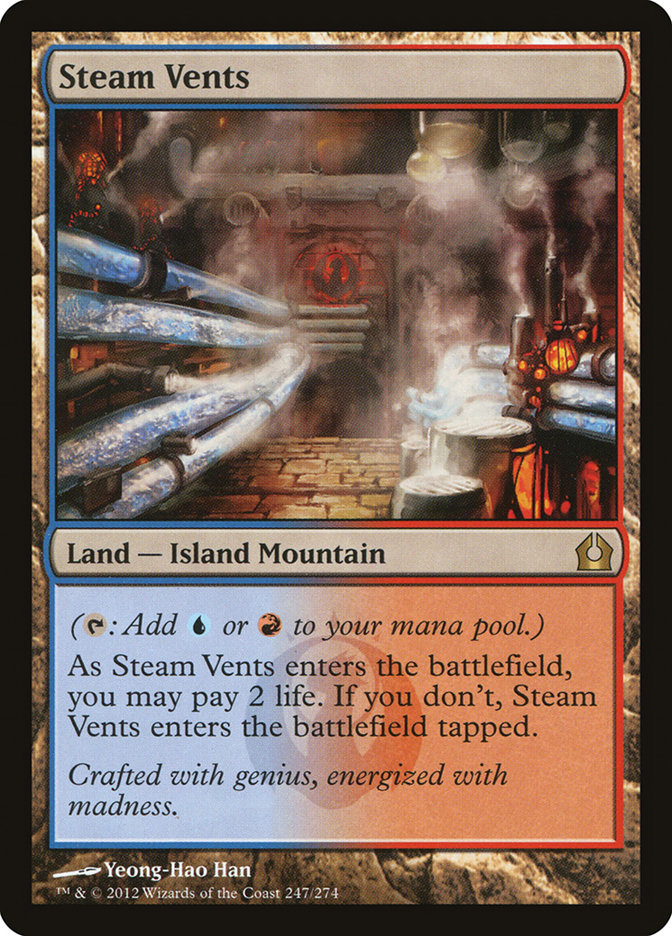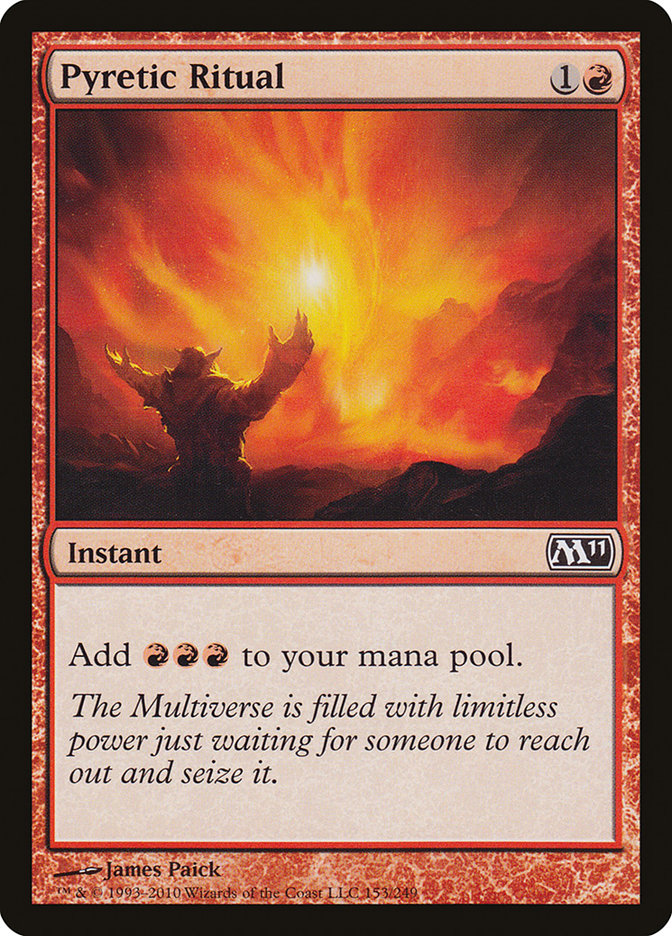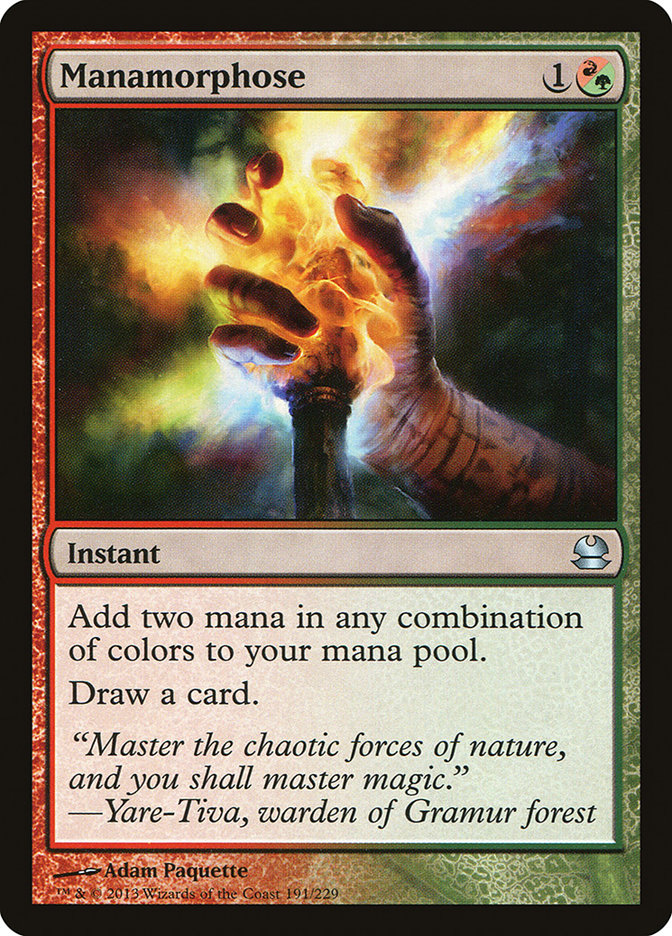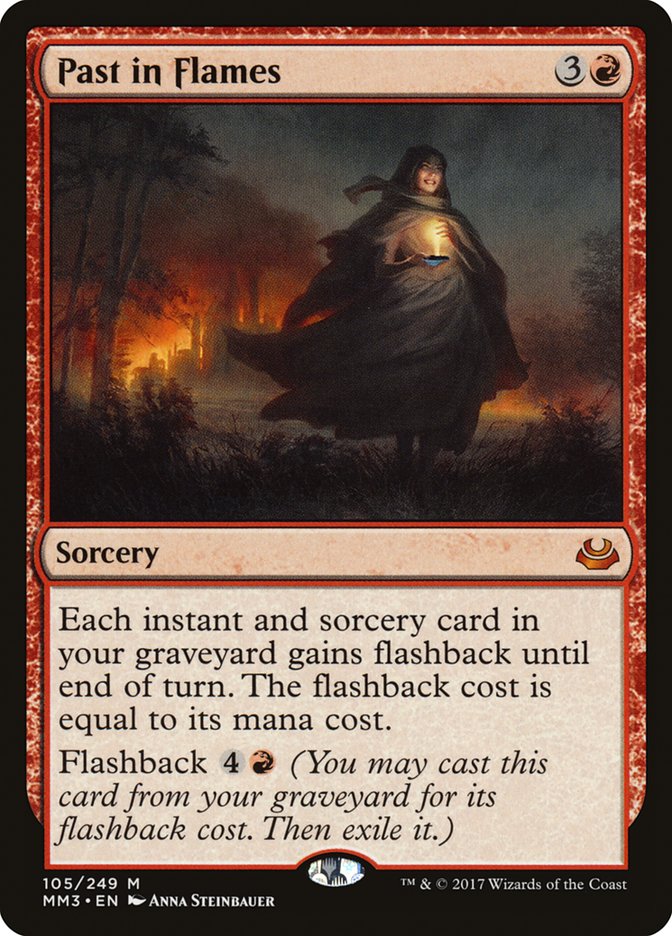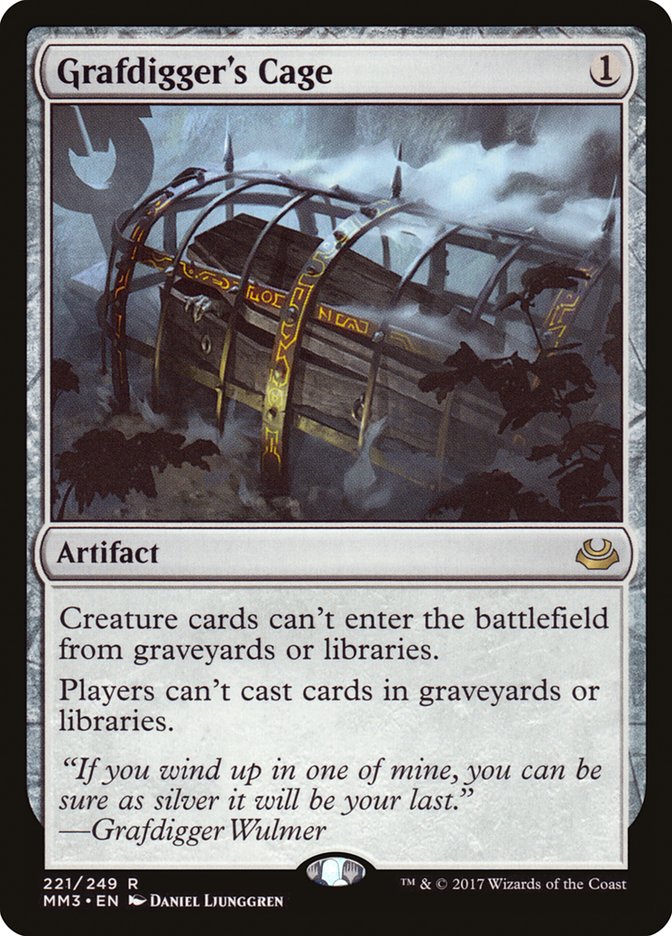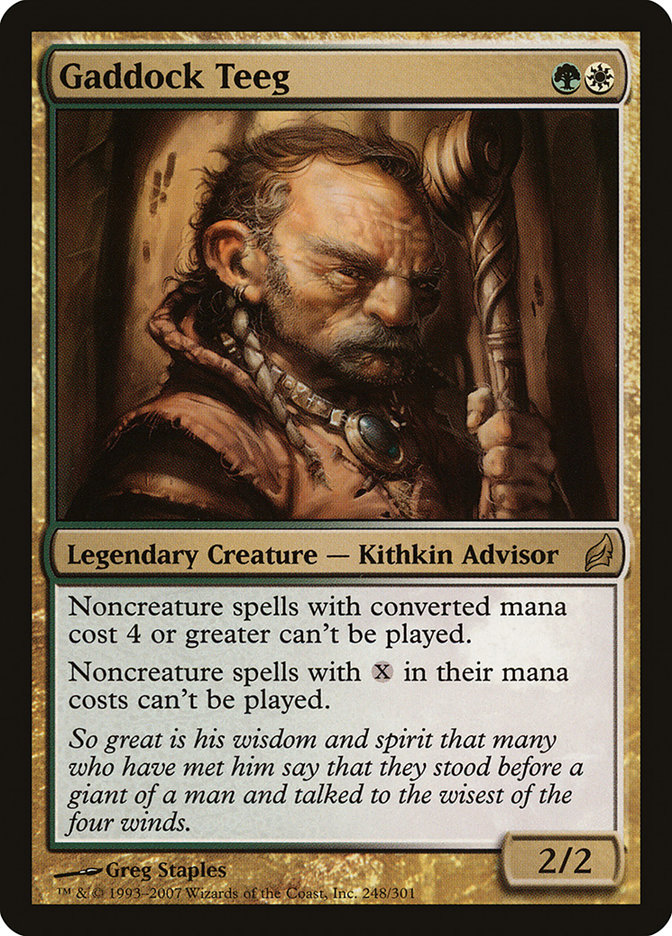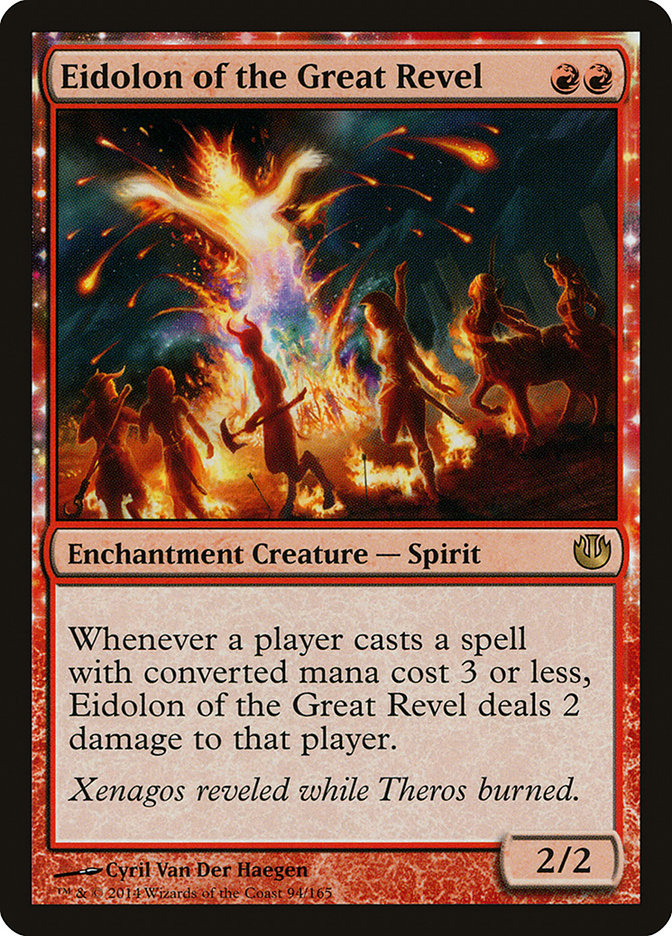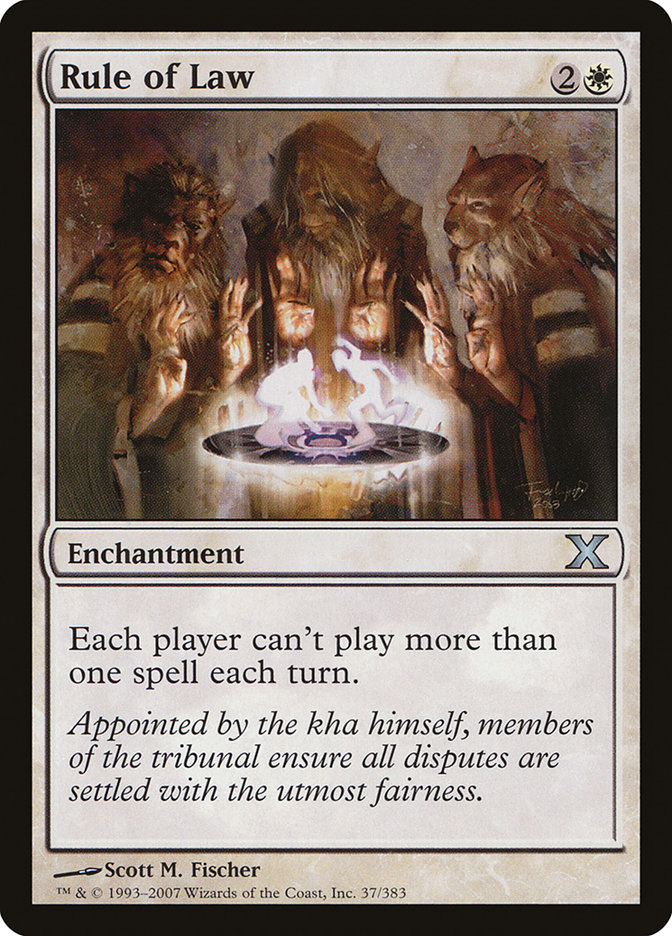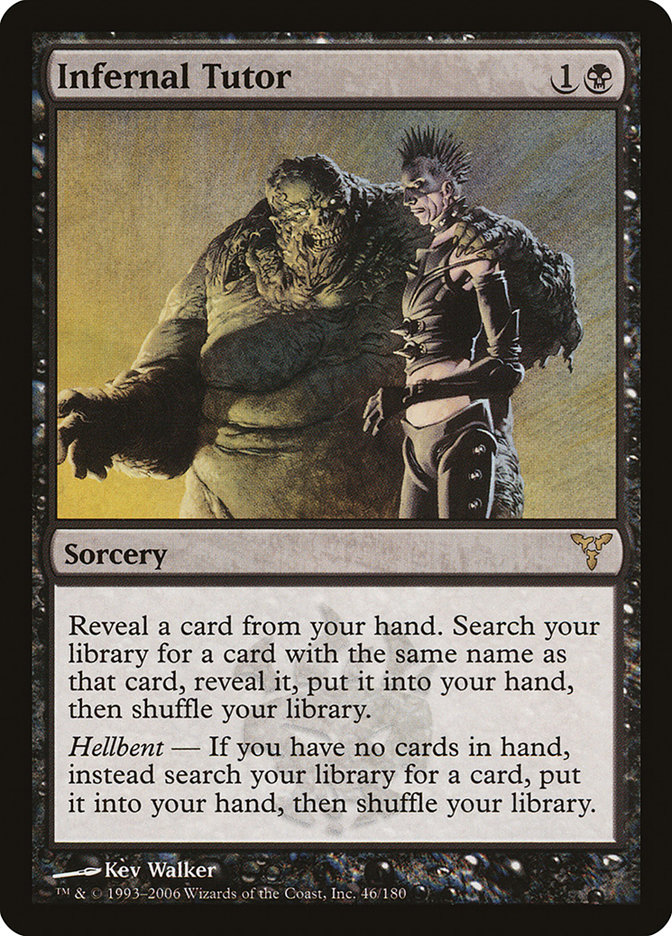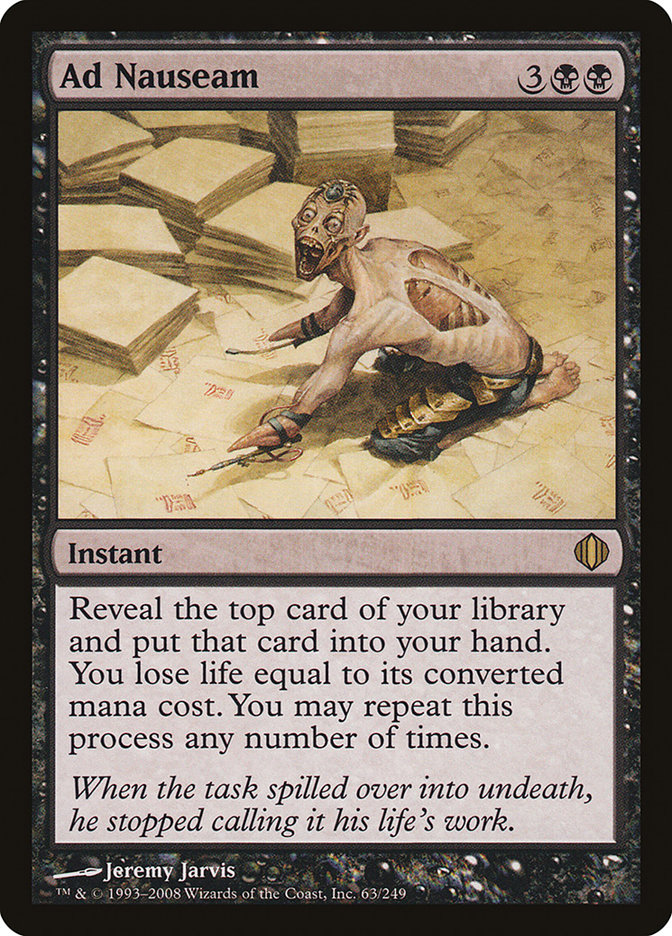Steam Vents is back on top, baby!
More specifically, Jeskai Control and U/R Gifts Storm have been dominating the SCG Tour for weeks now, and it’s time to Chart a Course from here. Storm specifically has been the deck that people could be doing a lot more to try and combat. It’s no secret that I have taken a strong liking to U/R Gifts Storm in Modern, including a semifinals appearance in the #SCGCHAR Modern Classic:
Creatures (7)
Lands (15)
Spells (38)

That being said, it’s time to address the elephant in the room: I’m winning a lot of “unwinnable” games on the backs of opponents making elementary mistakes in both deckbuilding and in-game decisions.
Understanding Storm
The first step of beating something is having a grasp of what it is that needs to be defeated. At the risk of sounding unnecessarily self-promotional, it’s hard not to recommend reading this article on Storm with fetches and Caleb Scherer’s work on fetchless U/R Gifts Storm. Both builds have their ups and downs, but the focus should be on identifying how the deck plans to adapt from one matchup to the next.
The first step to understanding what the decks are trying to do is to really look at what linear combo decks are trying to do and taking a formulaic approach from there. The key difference between a “linear” combo deck and a “nonlinear” combo deck lies in how the pieces of the combo tend to function outside of the context of their combo. In other words: do the pieces do anything meaningful outside of their combo?
For Storm, not really. Pyretic Ritual and Manamorphose really aren’t doing much unless they’re being used to crank out one of the deck’s Storm cards or build towards a Past in Flames. Nonlinear combo decks are the archetypes that don’t completely dismiss the idea of playing a “normal” game of Magic; think Counters Elves or the Four-Color Saheeli deck.
Creatures (25)
- 4 Birds of Paradise
- 1 Kiki-Jiki, Mirror Breaker
- 1 Eternal Witness
- 1 Reveillark
- 1 Kitchen Finks
- 1 Noble Hierarch
- 1 Lotus Cobra
- 1 Wall of Omens
- 1 Sun Titan
- 1 Scavenging Ooze
- 1 Huntmaster of the Fells
- 4 Voice of Resurgence
- 1 Pia and Kiran Nalaar
- 1 Reflector Mage
- 2 Renegade Rallier
- 3 Felidar Guardian
Planeswalkers (3)
Lands (19)
Spells (13)

Despite this deck having several ways to make arbitrarily large numbers of creatures, it also can just present the mediocre beatdown plan that’s become a sort of hallmark of the Chord of Calling and Collected Company decks.
Gifts Storm comes from a flavor of linear combo decks that can be summed up in a few parts:
- Enablers
- Payoff cards
- Kill conditions
Looking at Gifts Storm, everything in the maindeck falls into one of these three categories, is a cantrip, or is a land.
These are the enablers in the deck that make the deck go. Without these cards being cast, there isn’t much reason to lead up into…
…the payoff cards. These reward the Storm pilot for jumping through whatever hoops they’ve been put through in order to resolve these spells.
Finally, the win conditions. These cards tend to be pretty horrid before some combination of enablers and payoff cards have already resolved. Most Storm decks tend to lean on Grapeshot before sideboarding due to the instant death that comes from dealing twenty or more damage, one point at a time. Empty the Warrens requires less before producing an unbeatable number of Goblins, but creatures are a bit more fragile and don’t actually deal any damage until the following turn.
At its core, all Storm is really trying to do is implement the aforementioned cards in the order they were presented. This means that the key to stopping Storm is by disrupting this chain, whether through removing a piece of the puzzle, preventing the play pattern itself, or stymieing the kill condition at the end of the chain. Each of these forms of disruption requires a different line of play in order to be effective.
Removing Pieces
Removing pieces of the combo can be carried out a few different ways, but the most important thing about this angle of attack is pressure. Most linear combo decks are redundant and/or recursive to the point that, given enough time, smaller bits of disruption will be undone. Inquisition of Kozilek may have taken a Desperate Ritual, but the Storm player hitting a land drop or two undoes that almost entirely. Killing Goblin Electromancer as soon as it hits the table is nice, but killing the Electromancer doesn’t matter if they just find and deploy a Baral, Chief of Compliance.
At #SCGCHAR I played against Jeskai four times, and the only games I lost were to the players who understood how important pressure was in the matchup. My semifinal opponent and eventual Classic champion Jacob Ballington went as far as casting a naked Snapcaster Mage on the second turn for no other reason than to apply pressure as quickly as he could. Getting aggressive with Celestial Colonnade is so important that Jadine Klomparens featured an entire section on the sequence in her article this week.
Storm in particular has Past in Flames to fight through conventional means of interaction. Pox ends up being an okay matchup due to Storm needing to just sit back and hit land drops for as long as possible. Eventually Storm will end up with seven mana sources and a Past in Flames and be able to go off.
This translates to most other matchups as well. Draw steps equal resources. Untapping lands during one’s untap step equals resources. The more resources given to a deck that plans to win via synergy, the more powerful it will become. Give a combo deck too many resources (relative to the time it is allowed) and it will win.
Preventing Play Patterns
The exception to the previous paragraph is with dedicated hate cards. It doesn’t matter how many cards a Storm deck has when Past in Flames isn’t going to do anything through a Grafdigger’s Cage. When talking about turning off sequences of play, that tends to mean cards that alter the rules of engagement, commonly referred to as “hate cards.”
All of these cards do more than deny the Storm deck a single card or so. These cards all work to create a roadblock for one of the deck’s strategies.
Good luck winning with Grapeshot through one of these. Without Past in Flames, it’s near-impossible to generate enough Storm.
Empty the Warrens isn’t going to regularly win through either of these cards. It can’t even be cast through a Gaddock Teeg, and creating enough Goblins to race while staying at a high enough life total to race against an Eidolon of the Great Revel deck just isn’t realistic a majority of the time.
A Chalice of the Void for two is going to stop a majority of Storm’s Spells from doing anything functional. Rule of Law is going to ensure that Storm can’t ever get off the ground by counteracting the core goal of the deck.
All of these cards prey on the idea that negating entire swaths of cards will gain a significant enough advantage to warrant their inclusion in a deck or sideboard. The biggest drawback to these cards is that most of them aren’t particularly proactive and can be fragile.
Storm’s opponent isn’t the only player afforded the luxury of a sideboard. Storm tends to preemptively bring in an array of answers to the hate cards they expect to play against.
Stymieing the Kill Condition
One of the more common phrasings for this is “just counter the last thing on the chain.”
Infernal Tutor and Ad Nauseam have been the Storm payoff cards in Legacy for years, and the plan against Legacy ANT has been what fueled this mentality. The idea is that waiting until the last possible moment to use a counterspell is best, because that’s what denies the Storm player the most resources. Countering the second Ritual means they’re down two cards. Countering the Infernal Tutor means they’re out an entire hand of cards.
The idea translates to Modern Storm (specifically Gifts Ungiven), but counterspells aren’t the only way to achieve this.
Each of these cards completely invalidates an avenue to victory in its own way. Leyline of Sanctity and Runed Halo completely invalidate Grapeshot. Surgical Extraction can remove every single copy of a kill condition from the Storm player’s deck. Engineered Explosives is a colorless way to wipe an entire battlefield’s worth of Empty the Warrens tokens.
The biggest issue with most of these cards is that they tend to only answer a single kind of kill condition or payoff card. Counterspells can’t stop every single copy of Empty the Warrens, a Surgical Extraction will only exile one kill condition, and so forth.
Using cards with the sole purpose of answering one card is generally best when piloting a deck that is great at covering its bases against other kill conditions and strategies a deck may have. Let’s take another look at Jacob Ballington’s Jeskai deck:
Creatures (11)
Lands (19)
Spells (30)

Ballington and I played twice during the tournament, and in both matches he brought in Engineered Explosives and Supreme Verdict, despite them both being relatively narrow answers to Empty the Warrens, for exactly the previously mentioned reason. Ballington has a wall of answers for the Past in Flames into Grapeshot kill:
The Grapeshot kills with Storm require a wall of spells resolving, where a relevant number of Goblin tokens only takes three or four spells before Empty the Warrens is able to do the job on its own. Between hate cards, Spell Queller, and a wall of countermagic, it’s safe for Ballington to assume that he can keep the Grapeshot kills in check. This leaves him to shore up his deck’s weaknesses in the Empty the Warrens games.
Making a Conscious Decision
The most important part of beating anything in Modern is just choosing to win the matchup. It will come at the cost of percentage points against something else, but the biggest reason that Storm has been successful as of late is because the format has yet to collectively adjust for it. It’s no accident that Pieter Tubergen topped the standings at the end of the Modern Open’s Swiss rounds with a sideboard featuring Eidolon of Rhetoric; Thalia, Guardian of Thraben; Thoughtseize; and Stain the Mind. The man knew what he was gunning for and made the sacrifices necessary to convert.
The same can be said for any other matchup.
Past that, playtesting will do wonders for figuring out how to beat a deck without throwing away games to avoidable mistakes. Figuring out the subtleties of how a deck works will help in determining the best axis on which to attack, but knowledge only goes so far without any kind of change being enacted.


